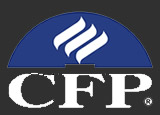June 13, 2018
Given enough time markets will go up! That is an undeniable truth if you place any value at all in historical evidence. And historical evidence is the only thing we really have when it comes to trying to figure out what the market will do next. From January 1, 1998, to December 29, 2017, $10,000 invested in the S&P 500 (if you could invest in the index) would have returned an average of 7.2% and grew to $40,135[i]. The only thing the investor needed to do, was not touch the money.
During those years we had all kinds of scary things happen. As far as the markets go, probably 2008 was the worst. At one point during 2008, the S&P was down 49%. In 2002 there was an intra-year drop of 34%. How easy and comforting it would have been to pull the investments and stash it in the proverbial mattress. But what a steep opportunity cost just to be comfortable.
The concept of successful investing is actually very easy; invest for the long term and don’t touch it. Do that for ten years and that $10,000 would have grown to $40,000 or, better yet, $100,000 would have grown to $400,000.
Concepts are easy, actual results of human actions show that sticking to an investment plan is exceedingly difficult. Dalbar Inc. calculates the 20-year annualized returns from 1997 to 2016 by the “Average Investor” is just 2.3%[ii]. Helping clients stick to a plan is one of the things we try very hard to do. Our internal debate is always between one side that says, “hey, this is their money—they can do with it what they like” and “but this is one of the reasons they hired us—to avoid the big mistake.”
An outside perspective can point out some of the potential pitfalls of what sounds like an “awesome investment” or “I must buy this widget now” or “I am having an emergency cash flow problem” or “my child(ren) need x”, etc., etc. Whatever the perceived need, we must ask ourselves if it is a clever idea to sell-out the investment (and its future growth) to scratch that itch. And sometimes it is the exact wrong time to cash out of an investment—see 2008 when we were momentarily upside-down 49%. Unfortunately, often, no matter what we say, many people are going to ditch the plan and take the money. Dale Carnegie said, “A man convinced against his will is of the same opinion still.” This is an absolute truism when it comes to money.
What is the solution to our impulsive behavior, so we ensure we don’t toss our future dreams for today’s perceived emergency? Well, the answer is embedded in the question—we have an “emergency account.” An emergency account is supposed to be money that is liquid and not invested in anything that could at some point be significantly down! For safe storing we are talking about short-term CD’s, bank savings, Credit Union savings, or a short-term bond fund allocations within an investment account. How much we keep in these constant, but low-earning investments, varies on what you consider an emergency.
If you consider a new-car dealer’s Memorial Day sale on the 2018 Cadillac CTS-V (just an example. . .) an emergency use of your investment money, then you’re going to need a very large emergency fund. However, a decent Rule of Thumb is 4 to 6 times your fixed monthly expenses. Others have advised keeping a year’s worth of your needed retirement income out of the markets. However, when making this calculation don’t forget to count all of your income, including money that is already out of the market—i.e., Social Security, pension payments or an annuity payment.
Keeping cash or cash equivalents available helps us stay disciplined with our investment portfolio. And by disciplined, we mean leaving it invested through thick-and-thin. We know, logically and intellectually, that no matter how dark the storm clouds look, the storm will pass and the market will reward us handsomely for our discipline. And we also know it will punish us for being undisciplined. Remember, volatility is the reason we get paid so well for investing in the markets. More on volatility in a future newsletter.
One last thing—we always have the option of saving more money while investing in the markets. Once we have our safe stash sitting on the side, we can start adding additional funds to a non-IRA investment account. This is easier to do monthly since we only need to make the investment decision once—then we sign some forms and magically, the money flows out of your checking account and into an investment account on a specific day each month. We are dollar-cost-averaging into our chosen investments throughout the year. When bad years come around we end up buying our positions at a cheaper price. As long as we don’t need the money soon as in, “hey Marty I need some money tomorrow to pay off my credit card,” it is a great way to build up a pile of money. If you do this long enough perhaps you can plop a large chunk of cash down on your 640HP 2018 Cadillac CTS-V. (I’ll take the Phantom Gray Metalic one.)
Thanks for reading, MK
[i] Market Insights, “Principals for successful Long-term Investing.” 2018 J.P.Morgan Asset Management
[ii] Ibid.


